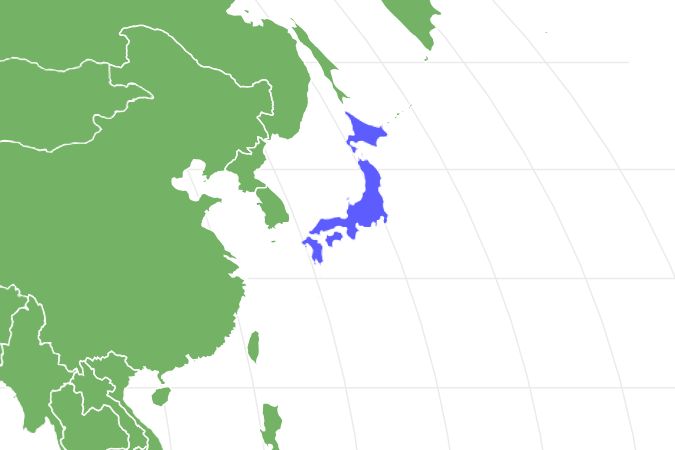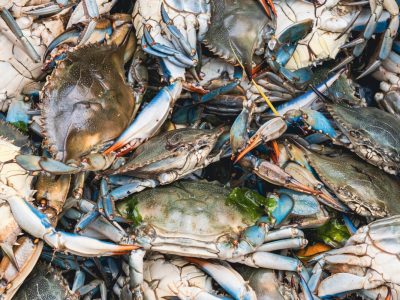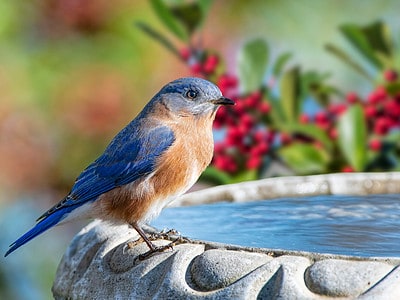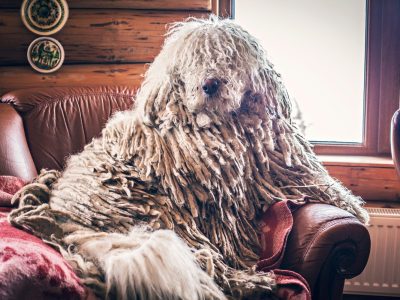Onagadori Chicken
Gallus gallus
The Onagadori, the chicken with the world's longest tail, was declared a Natural Monument of Japan in 1952.
Advertisement
Onagadori Chicken Scientific Classification
- Kingdom
- Animalia
- Phylum
- Chordata
- Class
- Aves
- Order
- Galliformes
- Family
- Phasianidae
- Genus
- Gallus
- Scientific Name
- Gallus gallus
Read our Complete Guide to Classification of Animals.
Onagadori Chicken Conservation Status
Onagadori Chicken Facts
- Prey
- Insects, small frogs, worms, small invertebrates
- Main Prey
- Insects
- Name Of Young
- Chicks
- Group Behavior
- Flock
- Fun Fact
- The Onagadori, the chicken with the world's longest tail, was declared a Natural Monument of Japan in 1952.
- Estimated Population Size
- Fewer than 1000
- Biggest Threat
- Degradation of DNA due to cross breeding
- Most Distinctive Feature
- Extremely long tail reaching up to 27 feet in length
- Distinctive Feature
- Extremely long tail feathers, long saddle feathers, white earlobes, slate blue feet
- Other Name(s)
- Tosa-no-onagadori
- Temperament
- Friendly
- Habitat
- Captivity
- Predators
- Owls, hawks, foxes
- Diet
- Omnivore
- Lifestyle
- Flock
- Favorite Food
- Chicken feed
- Common Name
- Onagadori chicken
- Special Features
- Long tail reaching up to 27 feet in length
- Origin
- Japan
- Number Of Species
- 1
- Location
- Mostly Japan, also the U.S., Europe and Asia
- Nesting Location
- High perches or nest boxes required for roosters
- Age of Molting
- Sickle feathers in tail do not molt
Onagadori Chicken Physical Characteristics
- Skin Type
- Feathers
- Lifespan
- 6 to 7 years on average
- Weight
- 3 to 4 pounds
- Age of Sexual Maturity
- 33 weeks
- Venomous
- No
- Aggression
- Low
View all of the Onagadori Chicken images!
The Onagadori chicken of Japan has the longest tail in the world, with feathers growing up to 27 feet in length! The ornamental Onagadori chicken originated centuries ago in the Kochi Prefecture in Japan. These extremely long-tailed chickens were bred to preserve a mutation that prevented tail feathers from molting. This mutation allowed the birds to grow tails up to 27 feet in length. Of course, breeders had to take special precautions to protect the impressive tail feathers and protect the chickens from predators.
In 1952, The Onagadori joined a select group of chickens named as Natural Monuments of Japan, a distinction that made them a national treasure. This move gave them protection and reproductive support from the Japanese government. Exportation of the birds was largely prohibited, and efforts were taken to preserve the breed. The Onagadori was also cross-bred with other types of chickens, resulting in the more common Phoenix chicken and the Yokohama chicken. Both of these sport long tails, but not nearly so long as the Onagadori.
Incredible Onagadori Chicken Facts
- The Onagadori is the chicken with the longest tail in the world, measuring up to 27 feet.
- The Onagadori is a critically endangered breed with estimated numbers less than 1000 wo.
- Onagadori chickens require a high protein diet in order to grow their incredibly long tail feathers, which do not molt or molt rarely.
- The feathers of the Onagadori roosters require protection using special perches and care.
- Onagadori chickens are friendly and docile birds.
- The Onagadori may have originated from crosses of wild junglefowl.
Where to Find Onagadori Chickens
Onagadori chickens are found almost exclusively in Japan. There are small numbers in the United States, Europe and maybe elsewhere in the world, but they are rare. Japan designated the Onagadori as a Natural Monument twice: first, in 1923 and again in 1952. At that time, it was given the name Tosa-no-Onagadori and was declared a Special National Natural Treasure. The Oshino Onagadori Preservation Society was formed to help preserve the breed.
Japan prohibited the export of these treasured chickens and their eggs after they were listed as a Natural Monument. The Onagadori lines found in other parts of the world have been bred from older lines, exported before Japan instituted the ban. The genetic purity of these Onagadori birds, as compared to the ancient Onagadori breed, has been diluted through crossing with other chickens.
One place for people to see Onagadori chickens is in the Onagadori Center in Nankoku City, Japan. The Onagadori roosters in this facility are kept in the traditional nesting boxes, called tomebako.
Onagadori Chicken Scientific Name
The Onagadori chicken’s scientific name is Gallus gallus or Gallus gallus domesticus, just like other domesticated chickens around the world. The red junglefowl of South and Southeast Asia, G. gallus, was named by Linnaeus in 1758. Today dozens of different breeds comprise the Gallus gallus domesticus species.
Onagadori Chicken Appearance
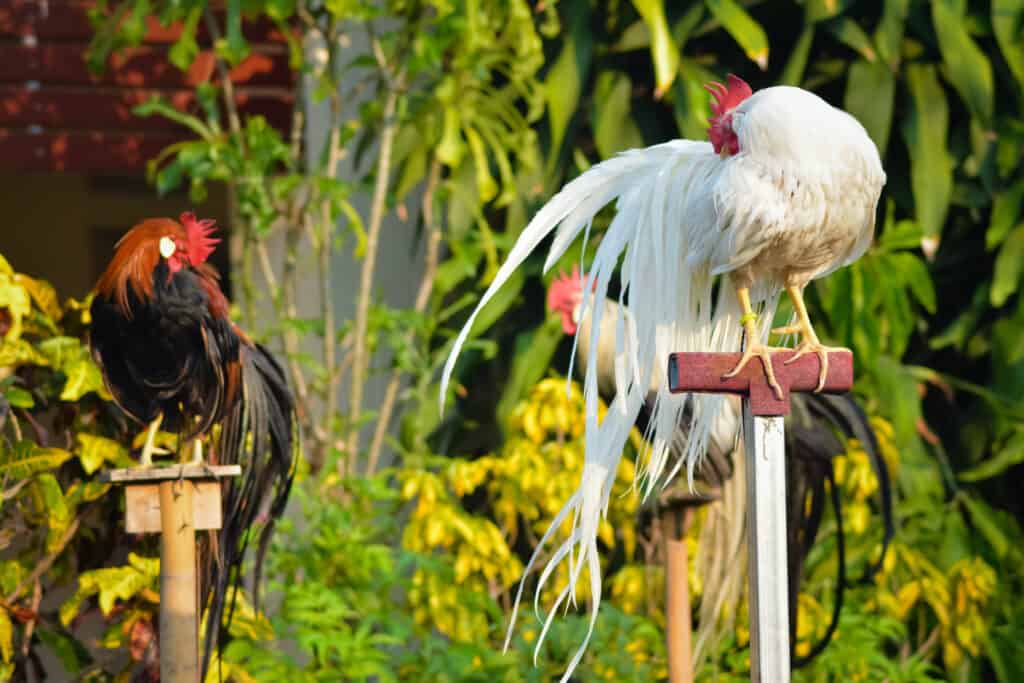
The ornamental Onagadori chicken originated centuries ago in the Kochi Prefecture in Japan.
©SARAWUT DEEPALA/Shutterstock.com
The Onagadori is a small to medium-sized chicken with an extraordinarily long tail. The hens weigh only about 3 pounds. Roosters weigh around 4 pounds at maturity. Onagadori comes in a variety of colors. The colors found in the Nankuko City populations include black-breasted white, black-breasted red, and white.
The most amazing feature of the Onadagori is the length of its tail feathers. Male Onadagori chickens have the longest tails in the world. This feature is thanks to a recessive gene. Onagadori of both sexes has long saddle feathers. Males have sickle feathers in their tails that do not molt, or rarely do, and can reach up to 27 feet in length.
Onagadori chickens are sexually dimorphic, meaning that the birds differ in appearance between males and females as they mature. Both have slate blue legs and beaks, and white earlobes. They have round, red faces, and medium-sized wattles. They both have straight, single, bright red combs, although the male combs are larger.
In 2018, scientists studied the effect hormones had on the growth of chicken feathers. They found that although the production of feathers in both male and female chickens can be affected by a number of factors, hormones may be the most influential. Other factors include temperature, light, and the bird’s individual diet. A diet rich in protein is absolutely necessary for growing the long, snowy tail feathers typical of a healthy Onagadori.
Onagadori Chicken Behavior
Onagadori chickens are at high risk of predation due to their small size and exceedingly long tail feathers. In Japan, male birds are traditionally kept as caged birds, living the majority of their lives in a tomebako. Breeders take great care to protect the chickens not only from predators but also from anything that might damage their feathers.
Like any other chickens, though, Onagadori does enjoy time to roam on the grass and explore. They require a secure enclosure, kept exceptionally clean, with high perches so that they can rest with their tails untangled.
Onagadori chickens are very friendly birds. These ornamental chickens are not aggressive and they do well with people. They should be protected from other chickens, especially if owners want their roosters to grow long tails.
Diet
According to a book on raising Onagadori written during the Taisho era from 1912 to 1926, these chickens were raised primarily on “rice bran, loach and crucian, frogs, insects (like grasshoppers, earthworms and small locust) and dragonfly nymphs.” Like other poultry, modern Onagadori chickens are typically raised on grain-based feeds which are adjusted as they mature. Chicks get one type of feed designed for their rapid growth. As the hens approach sexual maturity at around 24 weeks, they are switched to another feed that is specially designed with plenty of calcium for the best egg production. Adult roosters are also given a feed that is high in protein.
A diet rich in protein is necessary for all birds, to support the growth of their feathers. Feathers are made up of 90 percent or more of the protein keratin. Onagadori chickens, especially the males which rarely or never molt their tail feathers, need an abundance of amino acids. Most of this protein comes from their feed.
Onagadori Chicken Reproduction
Onagadori chickens reach sexual maturity later than chickens that have been bred for laying, according to researchers from Hiroshima University. When compared with White Leghorn chickens, the Onagadori hens reached sexual maturity after 237 days versus 192 days for Leghorns. Onagadori hens also produced fewer eggs overall.
Onagadori chickens are critically endangered birds. Their population decreased to as few as 200 birds in Japan around 2013. The researchers from Hiroshima University studied the quality of Onagadori eggs, discovering that they were of good quality from the very start. They suggested that as many eggs as possible should be incubated and raised in order to bolster the breed’s numbers.
A team of researchers studying Onagadori genetics in 2014 published a study on the genetic diversity of the breed. They found that in order to preserve the Onagadori, efforts must be made to prevent contamination of the lines with other breeds. They also found that efforts would need to be made to maintain genetic diversity within populations. Failing on either front could result in the erasure of the breed forever.
Onagadori chicks are available from a small number of breeders outside of Japan. Experts warn that they may be farther removed from the Onagadori genetic line due to crossing with breeds like the Phoenix chicken.
Predators
Onagadori chickens are small birds. They are able to fly up to high perches, but the males have such long tail feathers it would be difficult for them to escape predators. Owls and hawks are typical predators that might make an easy meal of an Onadagori. Bears and foxes are also present in Japan and elsewhere. These larger predators could prey on unattended chickens or break into coops that are not well secured.
Fortunately, Onagadori chickens are usually kept in very secure enclosures, due to their status as treasured birds. Snakes are probably the biggest threat to the Onagadori, as predators go, because they can enter a coop through the smallest of openings and devour chicks.
Concerns about animal rights
In the Kochi Prefecture, Onagadori roosters have traditionally been kept in special boxes called tomebako. These raised, cupboard-like boxes are so narrow that the roosters are unable to turn around. They have a barrier between the long section where the tail feathers are allowed to trail down and the perch where the chicken stands or sits. The rooster spends most of its life as a caged bird in this small enclosure, so that it can grow the longest and best quality feathers.
People concerned with animal rights have expressed concern for the Onagadori chicken, due to the use of the tomebako. They insist that these beautiful chickens would prefer to spend time outside, on the grass, and be able to wander around. Breeders who do allow their Onagadori roosters to spend time outdoors may need to put in extra work to keep their feathers clean and free of debris.
Lifespan of the Onagadori Chicken
Onagadori chickens live around 6 to 7 years on average but have been reported to live up to 20 years. During their lifetime, Onagadori roosters seldom or never molt their tail feathers.
Like other chickens, they are vulnerable to certain avian diseases, such as infectious bronchitis, avian influenza, fowl cholera, fowl pox, aspergillosis, and different forms of mycoplasma. Breeders work diligently to prevent such illnesses because the Onagadori is at such risk of disappearing.
Similar Animals
- Phoenix Chicken – The Phoenix is a descendant of the Onagadori. It has tail feathers that grow up to five feet long.
- Yokohama Chicken – The Yokohama is another descendant of Japanese long-tailed chickens, including the Onagadori
- Silkie Chicken – The silkie chicken is a bird of Chinese origin which is small in stature like the Yokohama, but it has fluffy feathers all over.
Onagadori Chicken FAQs (Frequently Asked Questions)
Why do people raise Onagadori chickens?
Onagadori chickens are ornamental birds prized for their extremely long tail feathers. They are protected as a Natural Monument of Japan and the government is invested in increasing the numbers of Onagadori and maintaining the genetic lines.
What makes Onagadori chickens special?
Onagadori chickens have a recessive gene which allows their tail feathers to keep growing without molting. They can grow up to 27 feet long.
How many varieties of Onagadori chickens exist?
In Nankoku City, Japan, home of the Onagadori Center, there are three varieties. These include the black breasted white, black breasted red, and white.
Where did Onagadori chickens originate?
Onagadori chickens are said to have originated hundreds of years ago in the Kochi Prefecture of Japan.
Where do Onagadori chickens live?
Onagadori chickens live almost exclusively in Japan. Export of chickens or eggs was prohibited after they were declared a natural monument.
What do Onagadori chickens eat?
Modern Onagadori chickens eat primarily commercial chicken feed. This feed supplies them with protein and other nutrients needed for proper health and feather production.
What treats do Onagadori chickens like?
Onagadori chickens like most fruits and vegetables, in addition to insects, worms, frogs and other small, meaty treats.
What should Onagadori chickens not eat?
Onagadori chickens should not eat rhubarb, avocado pits or skins, or beans.
Are Onagadori chickens good egg producers?
Onagadori chickens do not produce a large number of eggs, and they reach sexual maturity weeks later than hens bred for laying.
Are Onagadori chickens raised for meat?
Onagadori chickens are not raised for meat due to their protected status and the fact that they are quite small.
Are Onagadori chickens easy to raise?
Onagadori chickens are very difficult to care for because of their extremely long feathers which must be protected.
Are Onagadori chickens rare?
Onagadori chickens are among the rarest chickens. In 2013, there were only around 200 birds estimated to exist. Today the numbers are rising through careful breeding, but there are still fewer than 1000 estimated worldwide, with most living in Japan.
Thank you for reading! Have some feedback for us? Contact the AZ Animals editorial team.
Sources
- Kunming Institute of Zoology, Chinese Academy of Sciences, Kunming, China. / Accessed October 5, 2022
- Universiti Putra Malaysia / Khairul Anuar Muhamad Noh and Arifin Abdu / Published September 27, 2017 / Accessed October 5, 2022
- Guidoor Mobile City Guide / Accessed October 5, 2022
- The National Center for Biotechnology Information / Accessed October 5, 2022
- Japan Poultry Science Association / Accessed October 5, 2022
- National Library of Medicine / Published January 1, 2020 / Accessed October 5, 2022
- frontiers / Sec. Avian Physiology / Published January 21, 2020 / Accessed October 5, 2022
- Japan Poultry Science Association / Accessed October 5, 2022
- Ameba / Accessed October 5, 2022
- The Journal of Poultry Science / Accessed October 5, 2022

